One of the most significant sartorial developments in clothing history is the pocket. We all utilize pockets daily to enable us to store and transfer our items safely and comfortably.
Over time, pockets have changed with new features, configurations, and designs, Because of their practical functions, pockets play a significant role in the design of a garment, so there are a variety of pocket types and designs available. Pockets are a practical and ornamental component of a garment, including dresses, slacks, and coats.
Both functional and ornamental uses exist for a variety of pockets. Let’s examine the many pocket designs that are regularly sewn.
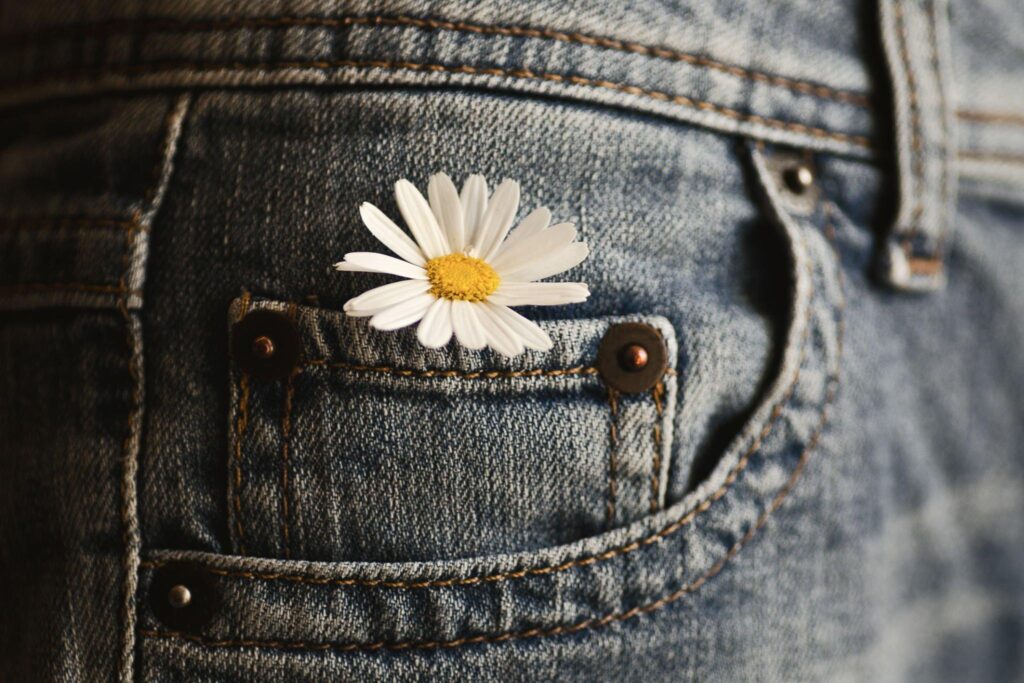
What varieties of pockets are there? Patch, flap, and side seam pockets are the three primary varieties of pockets. The standard pocket that is sewn to the clothing is the patch pocket.
Side seam pockets are slits in the garment with a pocket pouch within, while flap pockets include a flap that covers the pocket opening.
You can sew pockets fairly easily if you know what type of pocket you want for a garment or if it is specified in the sewing pattern. Denim trousers, shirts, blouses, dresses, skirts, bags, and purses frequently have pockets added.
You will discover the different kinds of pockets in this post, along with the ideal pocket designs for each sort of clothing. Regarding pocket designs and which pockets are appropriate for usage with pants, dresses, and jackets, they are addressed below.
Three Types Of Pockets

There are three main sorts of pockets, but there are also other kinds inside each of those “kinds of pockets,” which is what we’ll focus on a little more in-depth today.
A brief description of each of the three categories of pockets: Let’s examine some instances of each in more detail!
- Patch Pockets: Patch pockets are a sort of pocket that is made by placing a “patch of fabric” on top of a garment, the wrong side down, then top stitching it in place. Occasionally, the pocket may be “bagged out,” which implies that the top stitching would not be seen unless it was done so as a design element. There are other variations of the patch pocket style as well!
- Inseam Pockets: Our skirts, dresses, jeans, and jackets all have pockets that are sewn into the seams of the garments. Inseam pockets can be inserted as “grown on” inseam pockets or as distinct pattern pieces connected to a garment part, followed by the sewing of both pocket sections together to create the pocket. Inseam pockets may be sewed so that they appear to be invisible or they may be sewed with unique embellishments to stand out.
- Inset Pockets: A pocket that has been “placed into” the main body of the garment is known as an inset pocket. Consider the inner pockets on tailored coats for men, the rear pockets on women’s slacks, and the welt pockets on men’s fitted jackets!
Need A Specific Pocket Design For Your Garment?
Contact Us For Custom Manufacturing!
Get A Quote Today!
Different Types Of Pockets
Let’s break down the many sorts of pockets into 35 different categories. It’s important to note that many fashion designers combine diverse styles to produce unique and intriguing looks.
The list of the most popular pockets that fit into these above categories. The list below isn’t exhaustive, but it does contain the most common different types of pockets seen on clothes.
Accordion Pocket
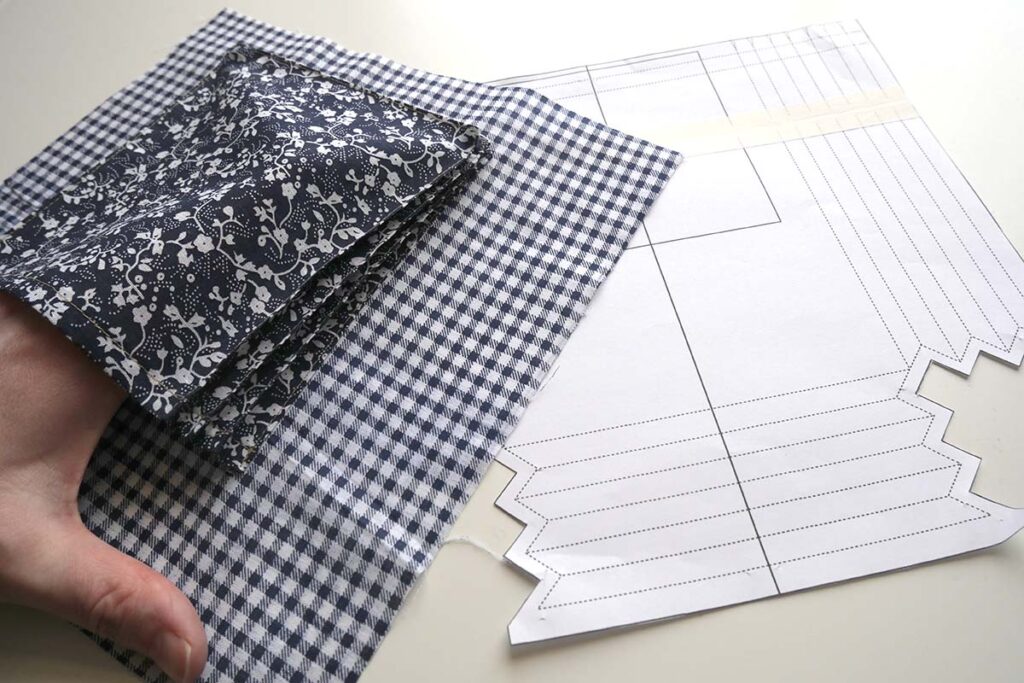
These are commonly made with at least one gusset along the edge of the “patch” component, which helps to push the pocket out from the main garment. They are also known as accordion or bellows pockets.
Most frequently, cargo- /army-style types of pockets on pants and outerwear items have accordion pockets.
Bellows Pocket
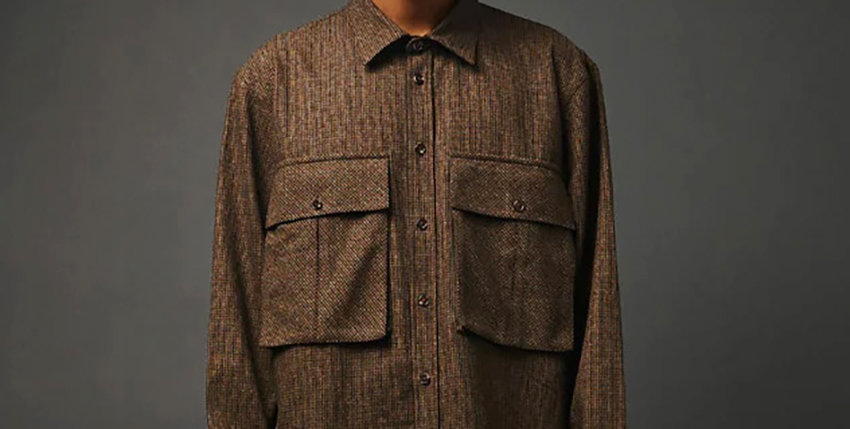
The central box pleat or inverted pleat of this style of pocket, also known as a safari pocket, expands when the pocket is utilized. The pocket’s center or sides may have this pleat. An extendable pocket of this kind.
Besom Pocket

A man’s suit jacket may have inset pockets called “Besom Pockets” that have a thin welted edge above the pocket hole. Pockets with welts
If there are welts on both edges, the pocket is a double-besom. The most typical type of suit jacket pocket
Bias Bound Pocket
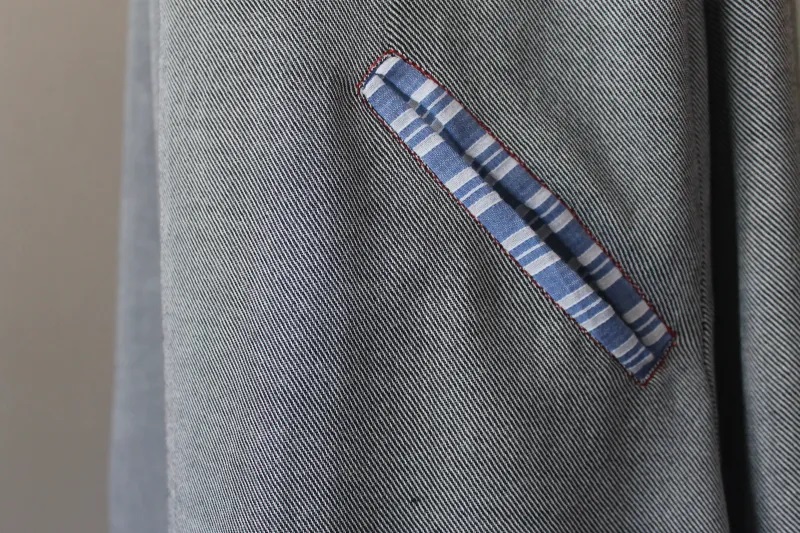
Binding is used to make the pocket opening secure after being cut on the bias. The slit offers a lovely edge.
Cargo Pocket
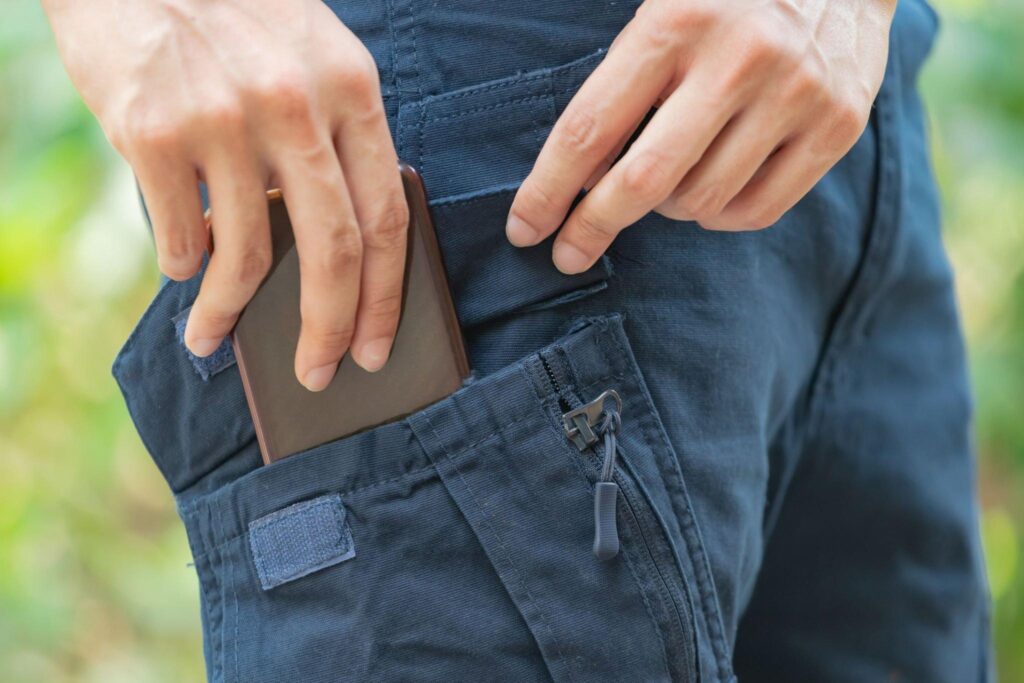
creates volume or extra space by folding, tucking, gathering, or pleating. Accordion pockets are an example since they may be stacked with other pockets and are extendable.
Coin Pocket
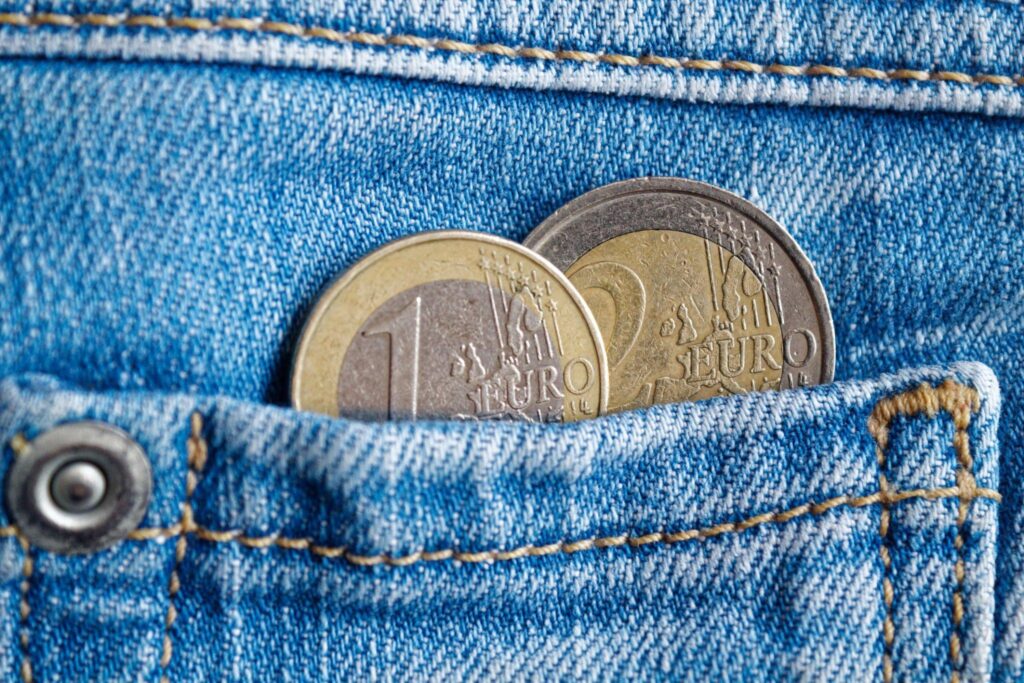
That tiny pocket in your jeans—also referred to as a coin pocket—is a patch pocket in and of itself. By adding embroidery or other embellishments, as is frequently the case with ready-to-wear clothing, these tiny, virtually invisible patch pockets can be made to stand out.
The pocket inside the pocket of a ticket pocket was meant to hold your train ticket. Typically, it can be found in the side inset pocket.
Chest Pocket

Men’s jackets typically have a breast pocket in the upper chest region (left). The breast pocket is a besom pocket.
Cuff Pocket

A decorative patch pocket known as a “cowl pocket” has fabric folds draped around the opening like a scarf.
Curved Inset Pocket
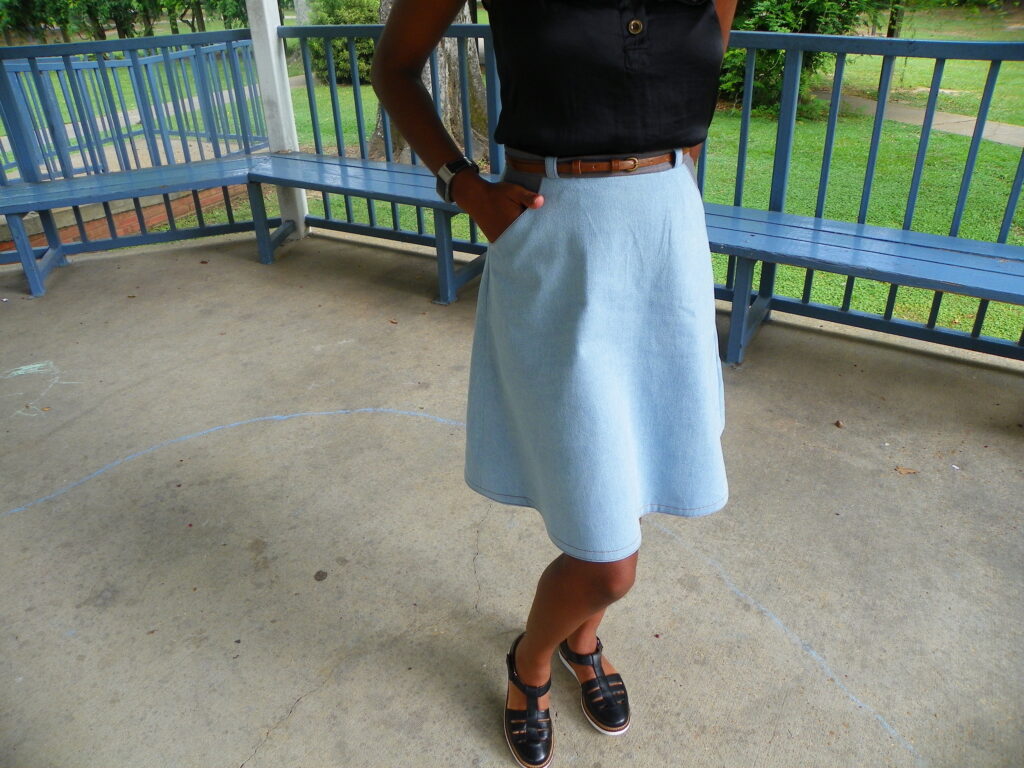
These pockets are typical examples of a set-in pocket, which is well-known for being present on the traditional five-pocket jean and often have a curved opening.
Discreet Pocket
These covert pockets are sewn to the interior of clothing to protect your things. This is typically an extra addition that is hidden from view. They are a must when traveling and are simple to shirt manufacture.
Draped Pockets

A cowl pocket, for example, has fabric draping about it in various folds. The extra cloth gives the pocket opening a flowing appearance.
Extending Pocket
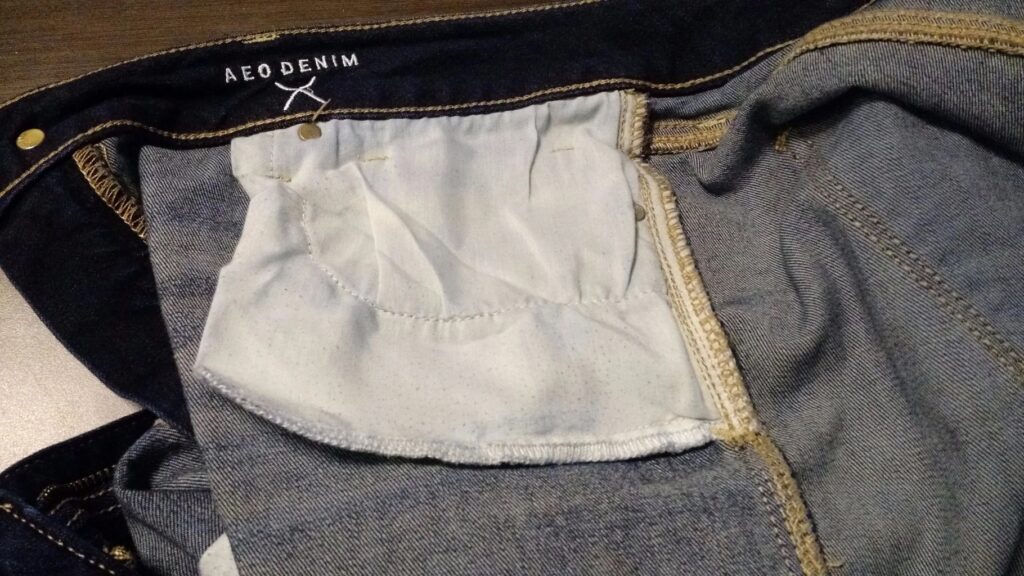
These are pockets that can grow if necessary. Its design, including folds, pleats, tucks, and gathers, includes provisions for this expandability.
You can create a tucked pocket with the extra fabric tucked in at the center or a gathered pocket with gathers that reach the top edge. The most typical expandable pocket is an accordion pocket, which has folds on the edges that allow it to expand and allow you to fill it with all of your belongings.
The expanding cargo pocket with a flap is most frequently found in the pants pocket types known as types of cargo pockets pants.
Faux Pocket

A phony pocket, typically found in jeggings, is called a “faux pocket” since it is closed up.
Flap Pocket
The flap over this pocket hides the slit in the pocket. Typically, formal clothing like jackets have pockets of this type. Patch, welt, or slit pockets are the most common types of pockets. The flap is typically rectangular, but other shapes, including curved and angled flaps, are also common.
On occasion, the flaps will have a buttonhole with a button closure on the pocket. The flaps are typically interfaced for a slightly thicker appearance.
Casual shirt designs now frequently have double-flap pockets. On both sides of the chest, double flap pockets are the same size.
Hacking Pocket

Men’s suit jackets and types of coat pockets typically include this type of slanted pocket. It is situated at the level of the waist.
Jetted Pocket

Jetted pockets, which are the reverse of patch pockets, are nothing more than a small, horizontal slit surrounded by two thin fabric strips, or “welts,” that serve as an entryway for the pocket bag that is hidden inside the garment.
The sleek and formal jetted pocket sometimes referred to as a “besom pocket,” is typically found on different types of pockets on jackets and other formal clothing.
Jeans Pocket

In terms of design, pockets in jeans are crucial. The style of the individual wearing the jeans is well conveyed by the jeans. The forms of the rear pockets on jeans range from standard to rounded to curved to arch. Standard Flaps, Rounded Flaps, Curved & Asymmetrical Flaps, and Pleated Flaps are some of the several flap types they occasionally have.
Kangaroo Pocket
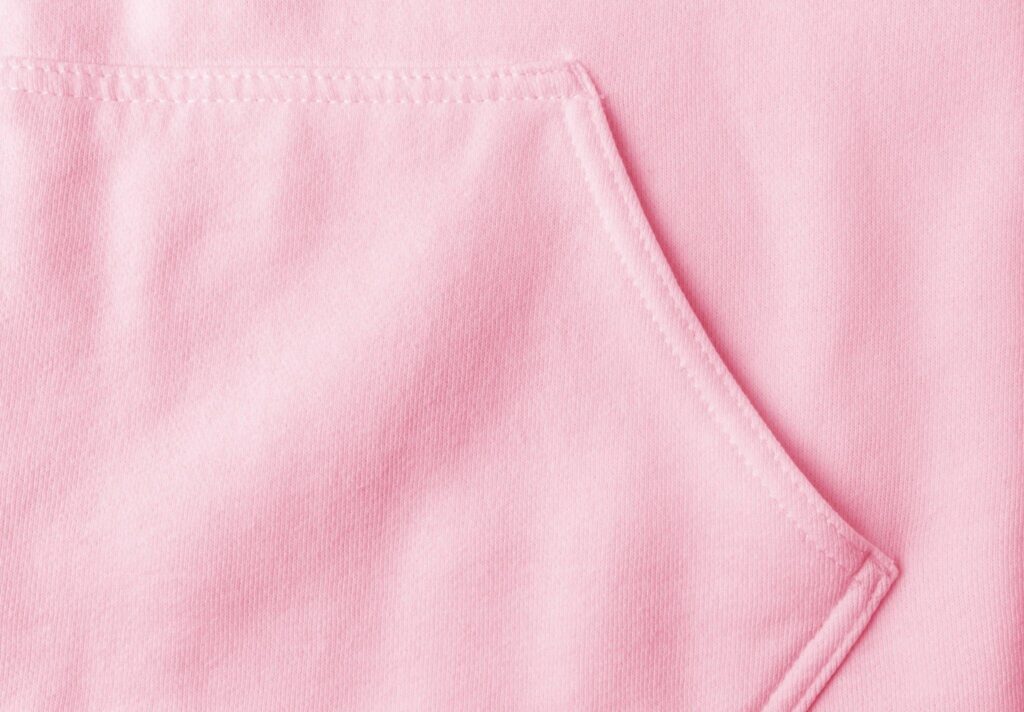
The kangaroo pocket is a pocket that covers the front of sweatshirts and is common on them.
Designers have been known to add kangaroo pockets using more creative construction techniques as well. Kangaroo pockets are typically topstitched into place, turning them into patch pockets.
Open Pocket
One of the most popular styles of pockets in clothing is the split pocket. You must have noticed something in your pants’ rear pocket. It is so named because all that can be seen of the pockets from the outside are their slits. A pocket bag is fastened to the slit.
Pork Chop Pocket
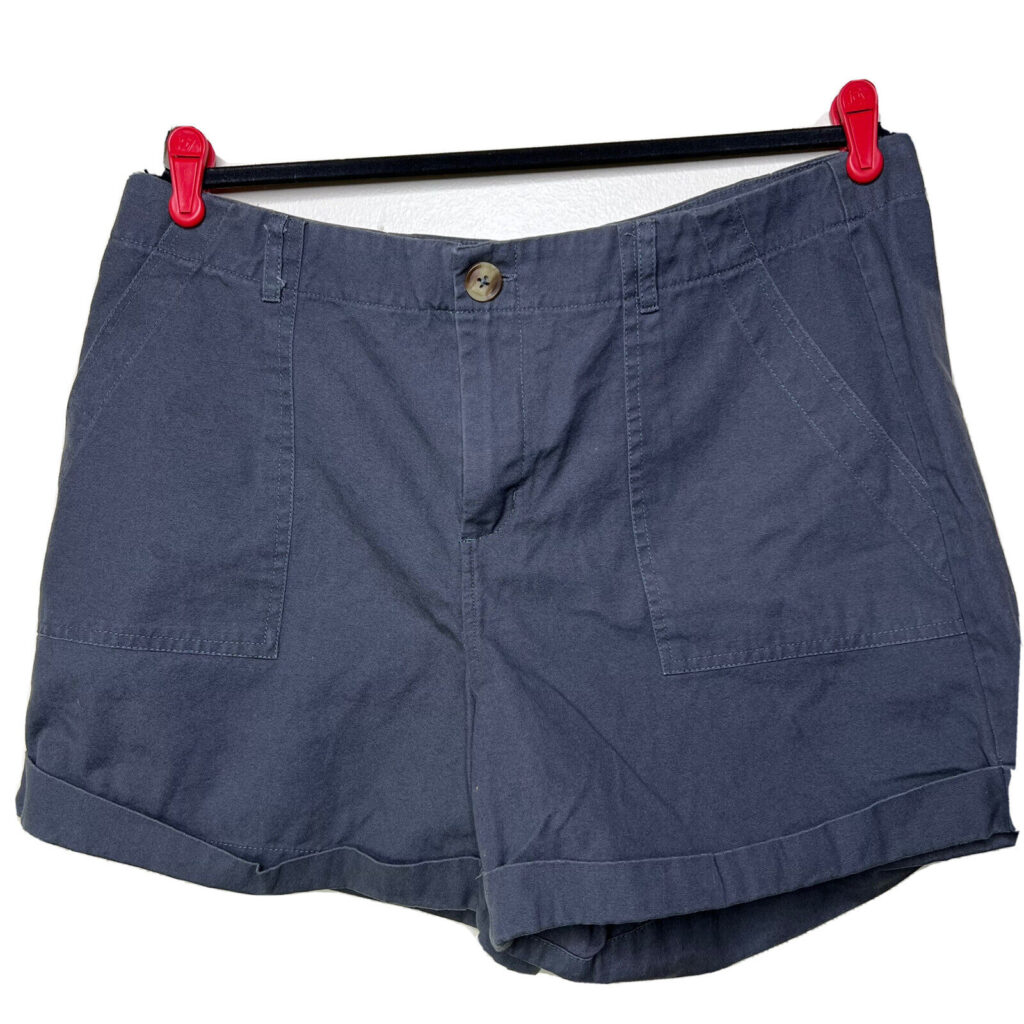
A front pocket style known as a “pork chop pocket” is often found on pants and jeans.
Patch Pocket
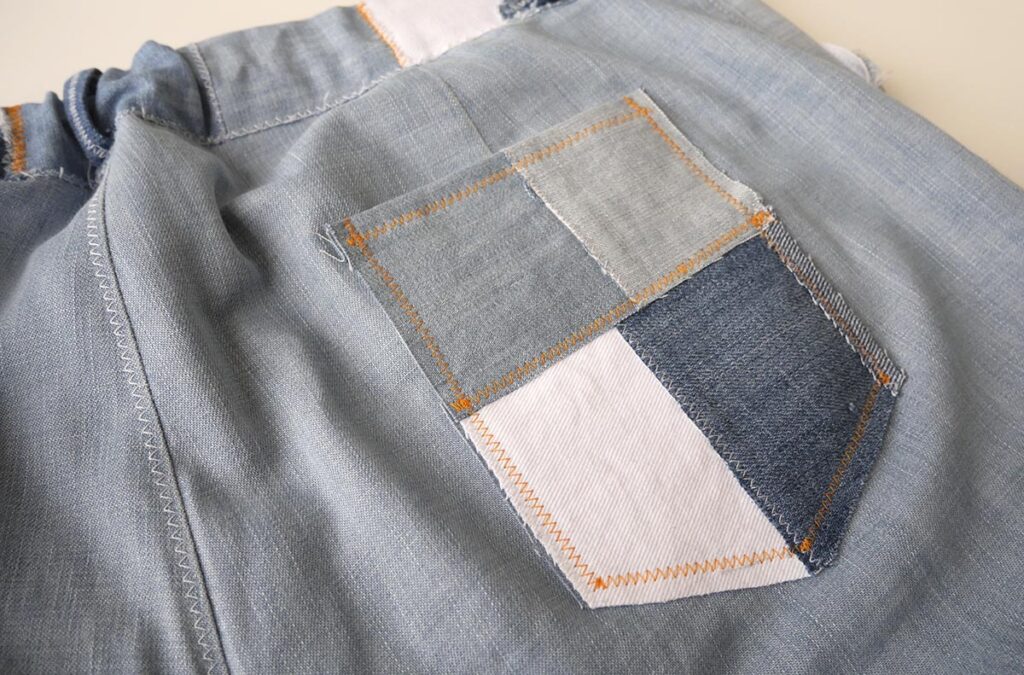
As the name implies, this pocket is a patch attached to the clothing. It is the most typical kind of pocket as well. On shirt fronts, you must have spotted patch pockets. It may be circular, square, rectangular, or even triangular.
Patch pockets are occasionally embroidered with a front pleat. Typically, the pleat is a box pleat or an inverted pleat. To provide you with extra interior space, this pleat is provided. The exterior pockets are known as “bellows” or “Safari Pockets” and have an expandable center box pleat or inverted pleat.
Pouch Pocket

This style of pocket merely connects to the garment at the top and hangs down the side.
Postbox Pocket
Patch and welt pockets are combined to create a post box pocket. A decorative element that surrounds the slit pocket tied in the aperture is called the patch.
Side Seam Pocket

Side seams are where inseam pockets are most frequently found. Consider the pockets in your pajamas or the pockets in a loose-fitting, elasticized circle skirt. However, this form of pocket can also be subtly concealed in the princess seams of clothing!
Shirt Pocket

A patch pocket is a type of shirt pocket. The garment is top-stitched to this pocket. Round and angular patch pockets are the two styles that are most frequently found on shirts. They are positioned on the shirt’s left side. The third buttonhole is often where they are positioned.
The patch pocket is topstitched with two needles on denim shirts.
It can have a top edge that occasionally has a welt effect, with the cloth rolled over, and a bottom edge that is straight, rounded, or formed into a triangle.
Slash Pocket

Slash pockets, often called “slant” pockets, can be seen on many types of clothing, including pants, slacks, and jackets. These pockets are angled into the garment so that the wearer may easily slide their hands in and out. In most cases, slash pockets on pants begin at the waistband and slope downward toward the outseam.
Sawtooth Pocket
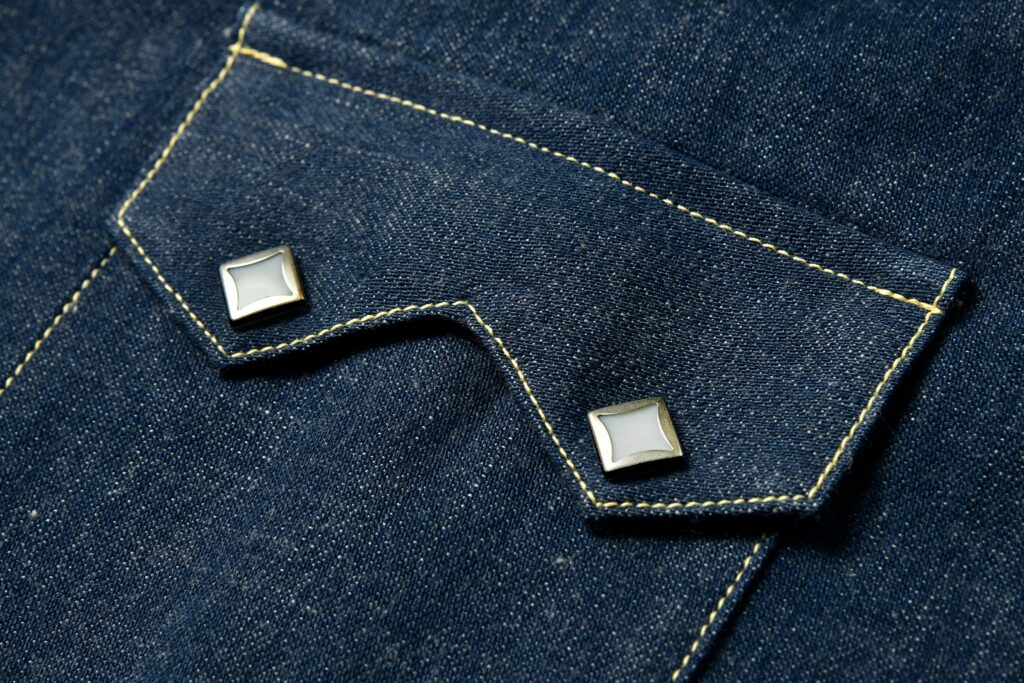
Practically speaking, the sawtooth pocket is a type of western shirt pocket, but we felt it was worth highlighting because of how frequently they appear on shirts with western styling. Patch pockets with flaps that resemble sawtooth patterns are a type of patch pocket.
The sawtooth flap’s two points are connected with a snap button at each point.
Stand Pocket
A unique piece of fabric has been placed on the top border of this pocket, above the pocket entrance.
Utility Pocket
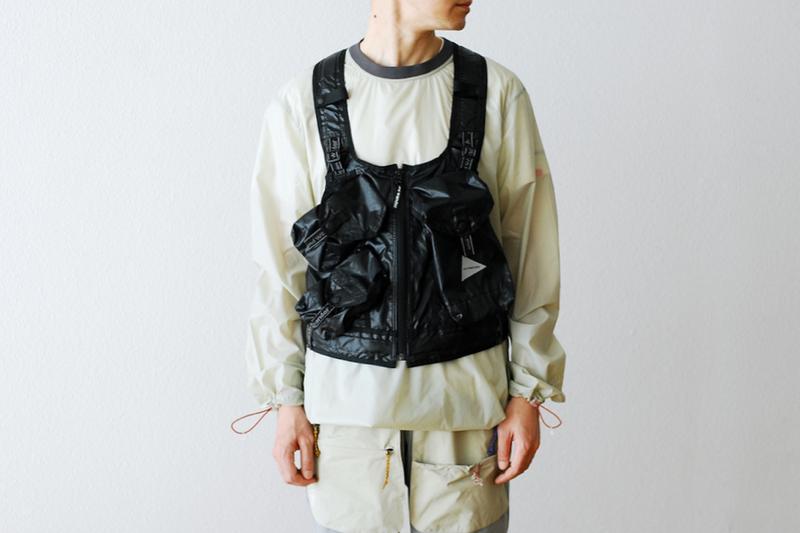
Any patch pocket that features many compartments is referred to as a “utility pocket.” Utility pockets are frequently found on clothing and bags with military designs. Additional, smaller mesh pockets or zips that have been particularly reinforced may be included in utility pockets.
Warming Pocket
This patch pocket has a side opening through which you can slip your hand.
Workwear Pocket

The mechanic pocket is a large patch pocket that lacks closure and is frequently found on classic pieces of workwear like railroad and chore jackets. This useful pattern is used to create pockets that can easily accommodate tools like screwdrivers and hammers. Metal rivets or bar-tacks are frequently used to reinforce the corners of patch pockets on work clothing.
Welt Pocket

The welt pocket, which is a set-in pocket with fabric welts finished along its length to stiffen the opening, is another popular pocket on chinos.
Western Pocket
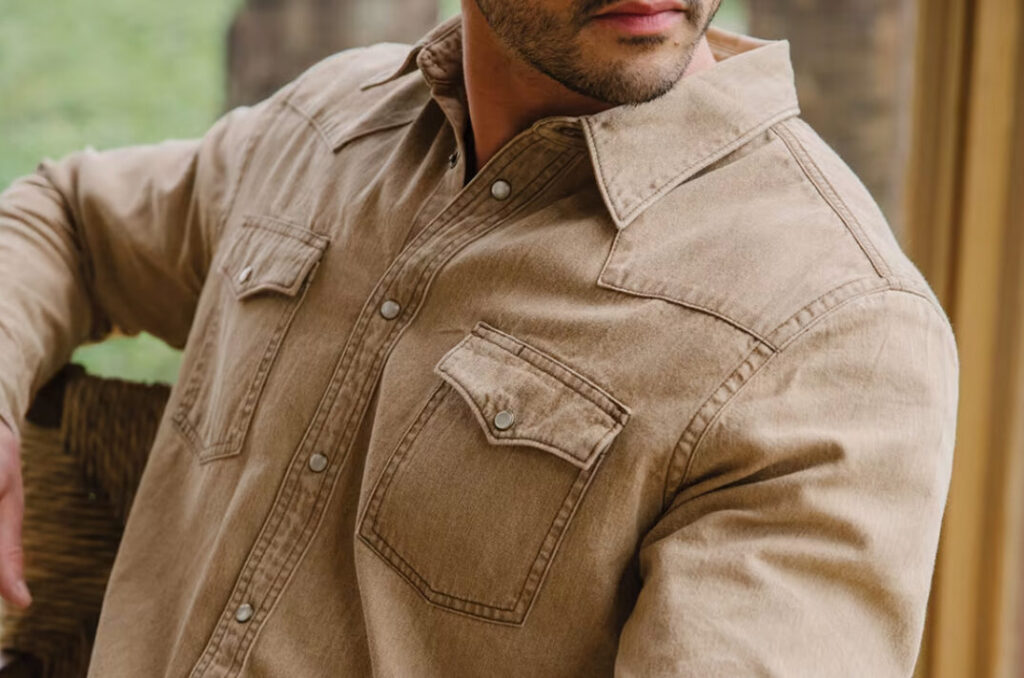
Western pockets are a type of patch pocket with elaborate flap fasteners. Snap-button closures are often found on western pockets.
Yoke seam Pocket
On the seam of the yoke, there is a slit pocket.
Zip-up Pocket
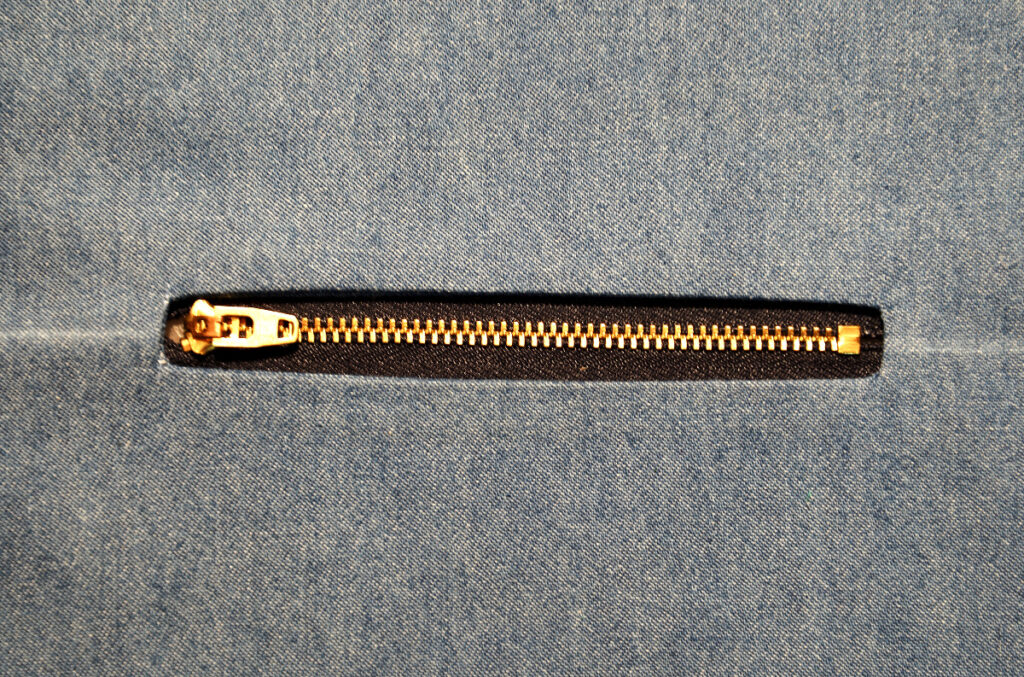
A slit pocket or patch pocket may have a zippered opening on one side.
How To Sew Different Types Of Pockets?
Patch pockets, inseam pockets, and slash pockets are the three different sorts of pockets.
Sewing Technique for Patch Pocket:
- Fold the top edge of the pocket hemline under the right side of the cloth, then stitch.
- Starting at the hem’s fold line, sew a stay stitch along the pocket’s seam line.
- Trim the excess fabric, flip the hem over, and then press it.
- Along the stitching, press the seam allowances in. Both square and rounded corners must be mitered or notched.
- Using a top stitch from the correct side of the fabric, sew the hem’s edge to the pocket by hand or with a machine.
- To attach the pocket to the clothing, use pins, a hand stitch, a top stitch, or a slip stitch. Corners can be strengthened by backstitching or by sewing a tiny triangle or square. To increase strength, both of the pockets’ upper corners need to be appropriately strengthened.
Sewing Technique For Inseam Pocket:
- Select two sets of pocket pieces in the primary fabric or a neutral fabric.
- Complete all of the pocket piece’s edges.
- Right sides together, sew pocket pieces to the front and back openings. To create pockets, press seam allowances inward.
- Pin the front and back of the clothing together, making sure the seams and pockets line up.
- Completely sew around the pocket and along the seam in one motion. Use stitch reinforcements. Fold the seam allowance in half.
- The pocket should now face the front of the garment. Piping material would be efficient. For added visual interest, buttons can be fixed in groups.
- If necessary, the seams can be finished.
Sewing Technique for Slash Pockets:
- On the front clothing pattern, cut along the line.
- Cut fabric into sections that correspond to the pocket’s slash.
- Change the front of the garment following the pocket slant.
- Position the pocket so that its right side is against the right side of the clothing.
- Press the seam allowance after sewing a seam line.
- Fold the pocket with the wrong sides together and sew a row of stitches along the bottom hem.
- The right side of the pocket can be accessed by flipping it back.
- Sew the pocket to the front panel of the garment.
- Press with precision.
FAQs
What Are Patch Pockets?
Instead of inset pockets, patch pockets are made by joining pre-cut pieces of material and stitching them, like a patch, to the outside of a garment. Think of the patch pockets on Paddington Bear’s duffel coat for an example of how patch pockets frequently have a flap at the top and become a feature of the design.
What Is The Pocket On A Hoodie Called?
Kangaroo Pockets are long, lengthwise pockets with two spaces for the hands at either end. They resemble letterboxes in appearance. Because they resemble a kangaroo’s pouch, they are frequently used on hoodies or in sportswear.
Final Words
You can sew the type of pocket you want to match the outfit thanks to the wide variety of pocket styles. Pockets are a fantastic garment component that serves both practical and ornamental functions.
Pockets are useful for carrying little items without having to carry a bag and they can enhance the appearance. Although there are innumerable pocket designs, the majority of them fall into one of these three categories: a patch pocket, a flap pocket, or a side seam pocket.
Patch pockets are the easiest pockets for novices to sew because they are constantly visible, depending on how they are made on the garment. For utility, the flap pocket may or may not feature a patch pocket. It is frequently used to give denim jeans or jackets a utilitarian appearance.
Side seam pockets have a pocket liner that is concealed inside. Used primarily in menswear or any upscale clothing to provide a clean finishing effect.
- Read More: The 17 Best Types Of Panties Every Woman Should Know
- Read More: Types of Jackets That Will Keep You Warm in Extreme Cold







